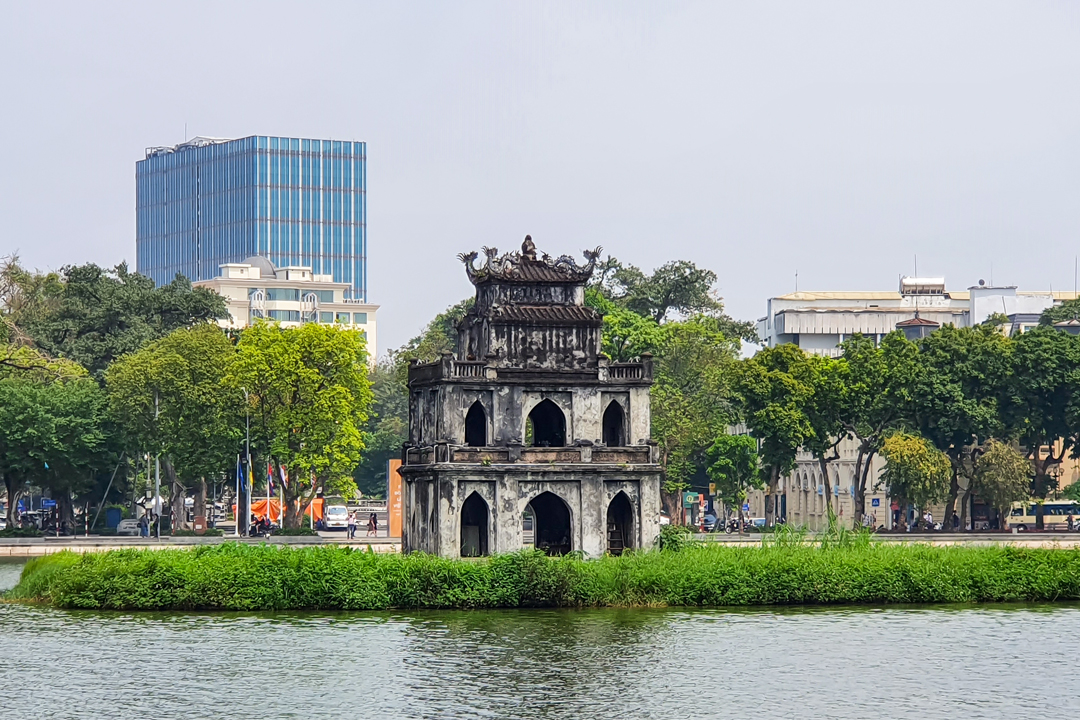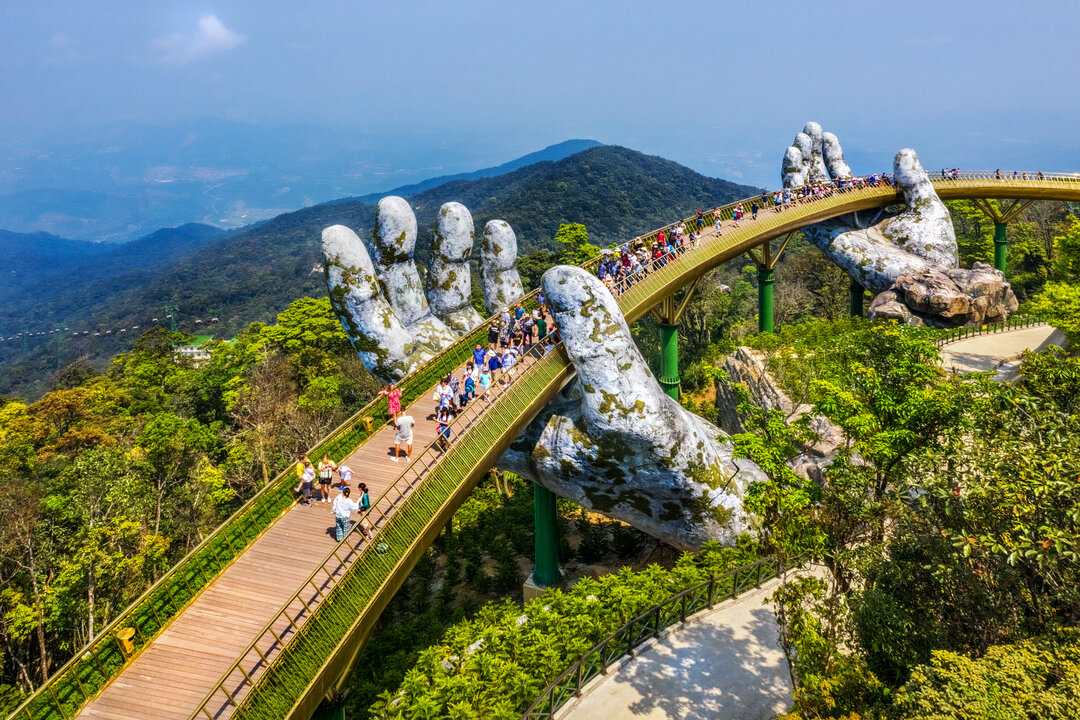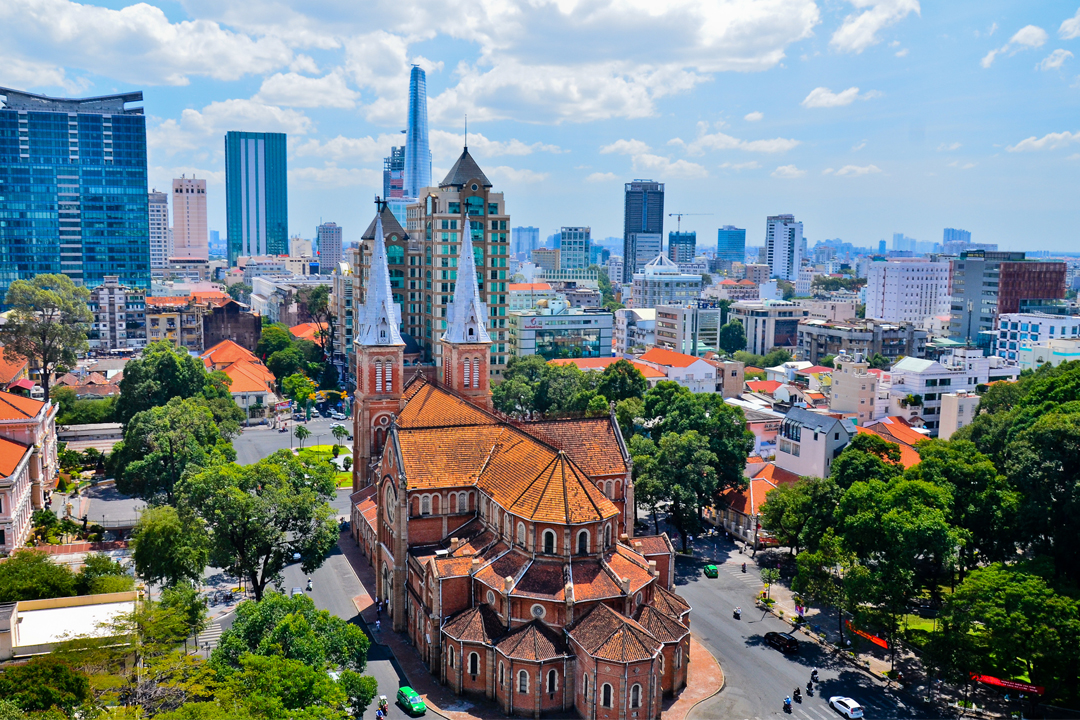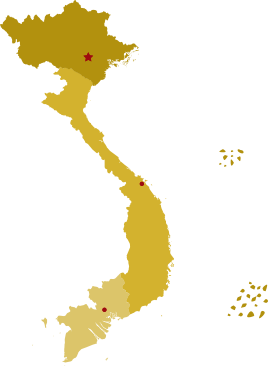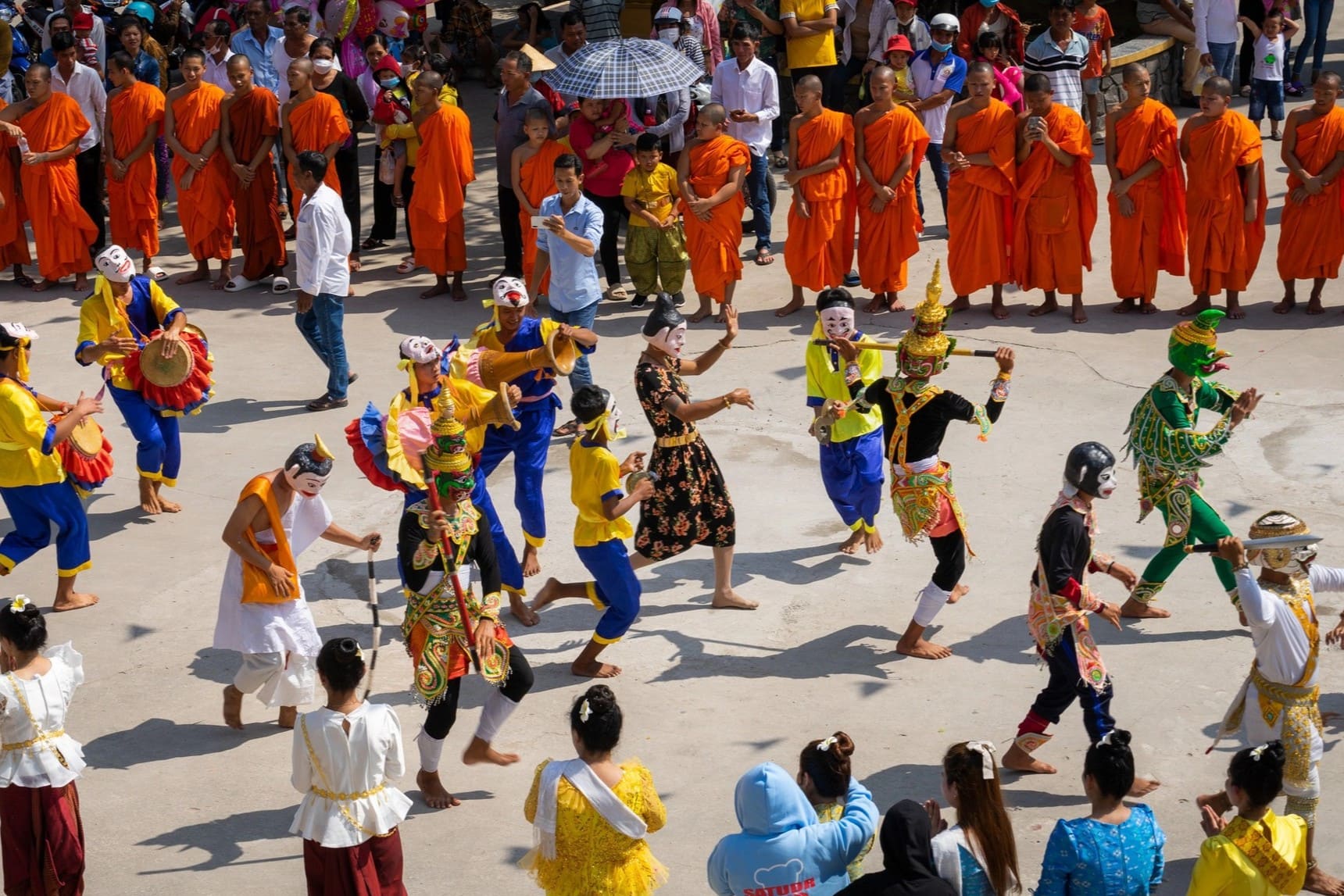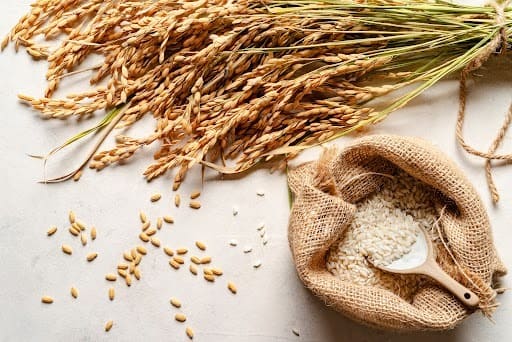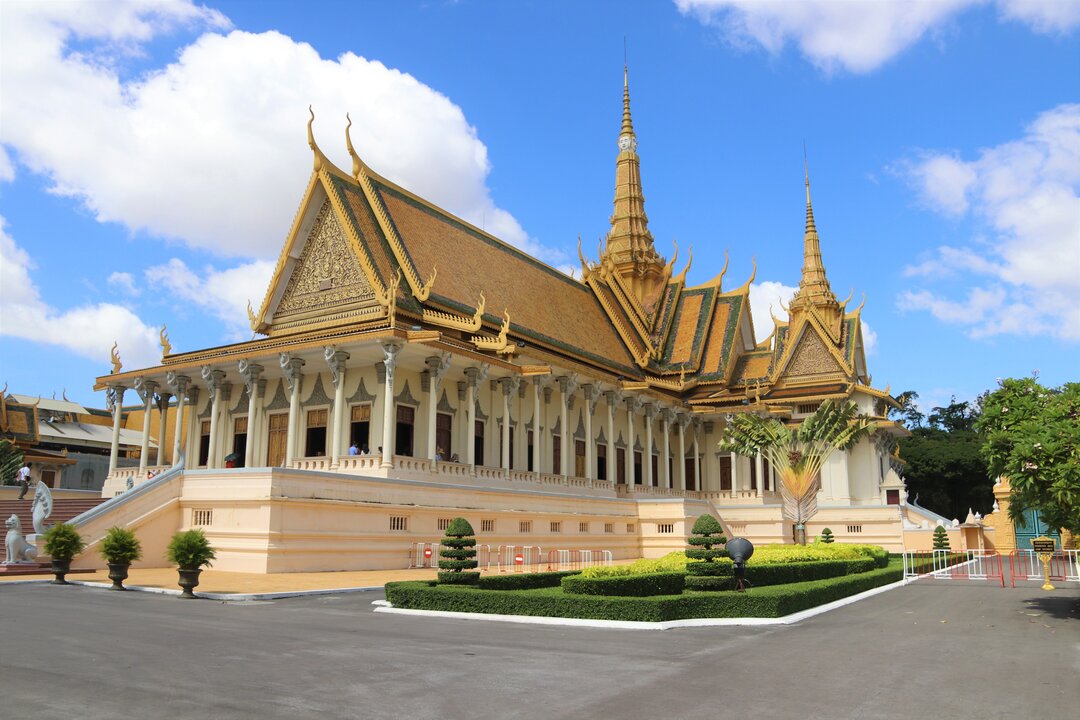Thai Hoa Palace (Throne Hall): Overview, History, Architecture & Travel Guide
Stepping into Hue’s Imperial City, visitors are captivated by the majestic Dien Thai Hoa, echoing the legacy of the Nguyen Dynasty. Amidst the verdant landscapes and ancient grandeur, this ceremonial hall stands as a symbol of imperial power and architectural brilliance, enticing history enthusiasts and curious explorers. Drawing visitors from around the globe, the throne hall is more than a picturesque monument. It's a canvas of cultural heritage, clad in intricate dragon motifs and resplendent with stories of emperors like Gia Long and Bao Dai.
In this exploration, we unravel the fascinating layers of its history, architectural marvels, and cultural significance, offering insights beyond the ordinary guidebook. Ready for a deep dive into the regal past that shaped Vietnam's history? Let's embark on this journey through time.
Overview of the Throne Hall (Thai Hoa Palace)
Located in Hue City, Thua Thien Hue Province, Thai Hoa Palace is the central and most important building within the Imperial Citadel of Hue. Originally constructed in 1805 during the reign of Emperor Gia Long, the palace was later relocated to its current site by Emperor Minh Mang in 1833. It housed the throne of 13 Nguyen Dynasty emperors, from Gia Long to Bao Dai. It symbolizes the supreme authority of the Vietnamese feudal monarchy throughout its 143 years of existence.
Functionally, Thai Hoa Palace hosted key royal ceremonies, including coronations, emperor’s birthday celebrations, and longevity rites. It also hosted national commemorations and regular court sessions held on the 1st and 15th of each lunar month. During these events, the emperor sat on the throne to receive officials, royal relatives, and mandarins, showcasing his power and court unity. Only the highest-ranking officials could meet the emperor inside the palace, while others stood in the courtyard, their rank marked by stone tablets.
Architecturally, Thai Hoa Palace is renowned for its grandeur and intricate craftsmanship. The hall is supported by 80 ironwood columns painted in red and gold, richly decorated with dragon and phoenix motifs, symbols of imperial power and prosperity. The three-tiered throne, under a five-colored canopy with nine dragons, creates a majestic atmosphere befitting the emperor’s status. The palace’s roof is covered with imperial yellow glazed tiles, and the elaborate decorative patterns further enhance its unique beauty.
Thai Hoa Palace is a cultural and political symbol of the Nguyen Dynasty, hosting key historical events and national decisions. Despite numerous restorations over the centuries, including a major conservation project completed in 2024, the palace has retained its original character. The project applied green preservation standards for the first time in Vietnam’s UNESCO heritage sites, ensuring its historical significance is preserved.
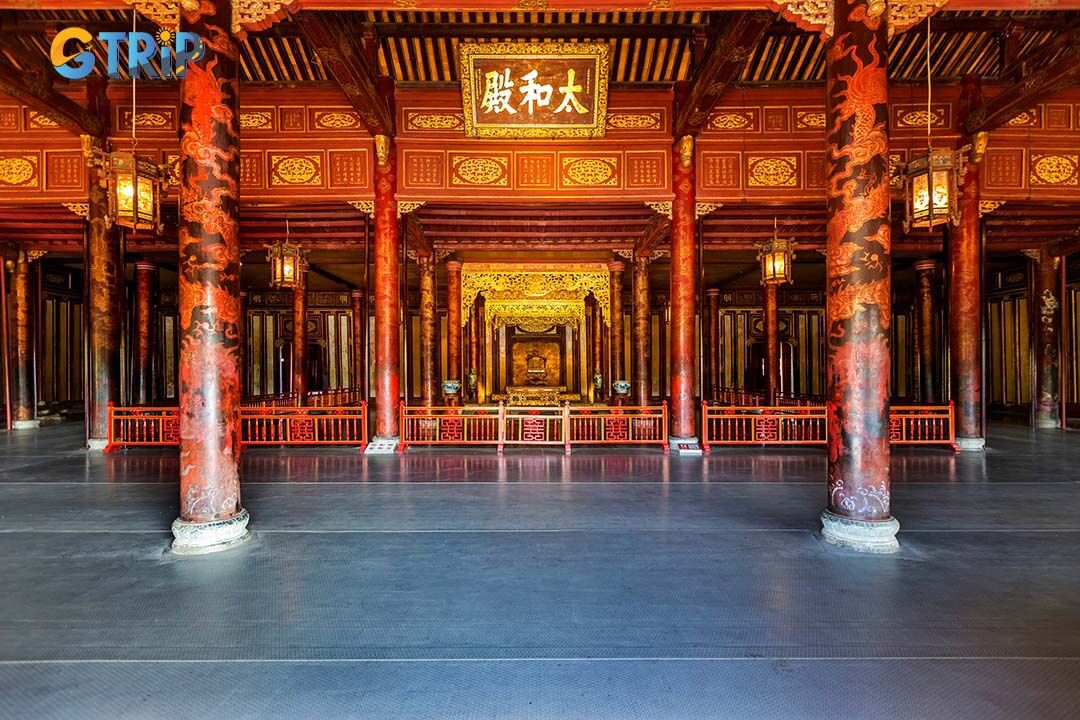
Thai Hoa Palace is the most important royal hall of the Nguyen Dynasty, symbolizing imperial authority and hosting key ceremonies for over 140 years
The historical background of Hue under the Nguyen Dynasty
Thai Hoa Palace was initiated on February 21, 1805, during the reign of Emperor Gia Long, and completed within the same year, initially located at the site of the Canh Chanh Palace. In 1833, Emperor Minh Mang relocated Thai Hoa Palace to its current position and expanded it on a grander scale. This location has remained unchanged to this day.
In 1923, under Emperor Khai Dinh’s reign, the palace underwent major renovations to prepare for the grand 40th birthday celebration of the emperor in 1924. The palace underwent smaller repairs and renovations during the reigns of Emperors Thanh Thai and Bao Dai. Additional restorations took place in 1960, 1970, 1981, 1985, and 1992 to maintain and preserve the monument.
From November 2021 to late 2024, the palace underwent a comprehensive conservation project funded with nearly 129 billion VND by the Hue Monuments Conservation Center. The project focused on preserving and restoring the structural wooden framework, roofing system, walls, floors, and both interior and exterior decorative details. After nearly three years of construction, the project was completed and opened to visitors in November 2024, ahead of the original schedule by nine months.
Over more than 200 years, Thai Hoa Palace has undergone multiple renovations to withstand the effects of time, the harsh climate of Central Vietnam, storms, and wars. Despite changes, the palace has preserved its essence, architecture, and historical value, remaining the center of power and ceremonies for the Nguyen Dynasty.
Thai Hoa Palace has undergone three main phases. It was initially constructed in 1805 under Emperor Gia Long, followed by relocation and expansion in 1833 under Emperor Minh Mang. Major renovations occurred in 1923 under Emperor Khai Dinh, with additional repairs and modern restoration efforts preserving the monument to this day.
The architecture of Thai Hoa Palace
The architecture of Thai Hoa Palace is a grand and exquisite example of Nguyen Dynasty imperial design, reflecting both aesthetic elegance and symbolic meaning.
Structural and architectural features
Built in 1805 under Emperor Gia Long, Thai Hoa Palace was the ceremonial center of the Nguyen Dynasty. Known for its grand design and symbolic structure, the palace reflects the elegance of Vietnamese royal architecture and traditional craftsmanship.
Double-house structure with overlapping roofs
Thai Hoa Palace features a unique "double-house" architectural style, where 2 halls are connected with overlapping roofs that appear separate from the outside. Internally, they are linked by an arched ceiling resembling a crab shell. This design creates a majestic and spacious interior and cleverly conceals the concave space between the roofs, adapting to the Vietnamese climate and architectural traditions. The roof tiles are arranged in three overlapping sections to enhance height and reduce pressure on the supporting pillars.
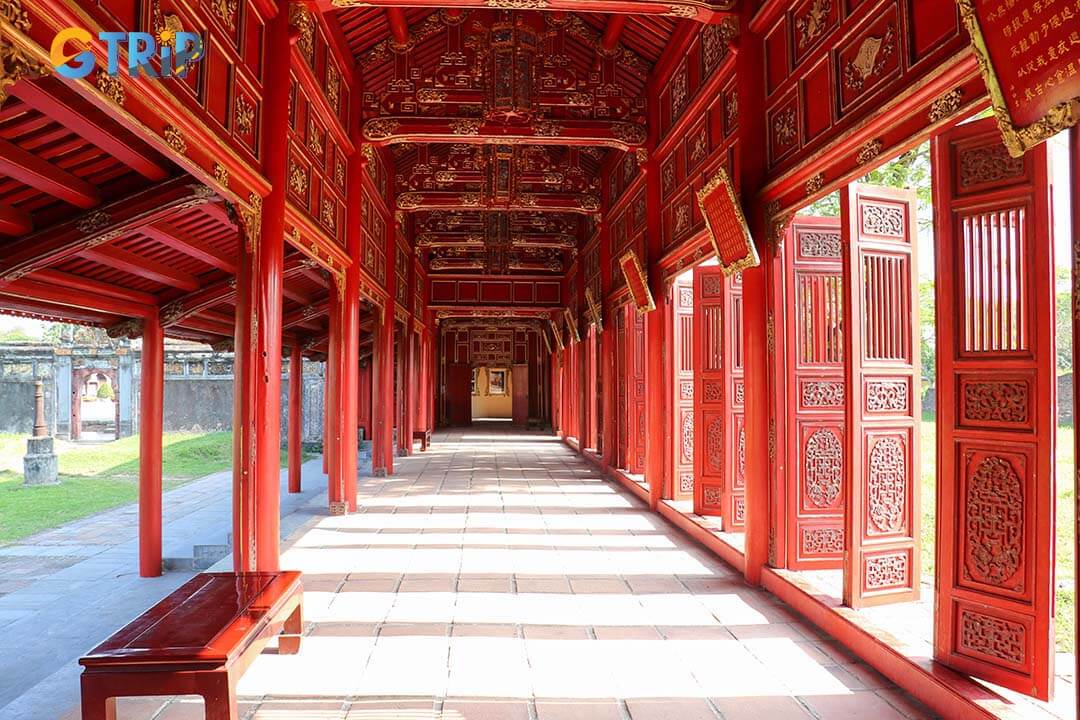
Thai Hoa Palace features a unique double-roof design with a crab-shell ceiling, combining elegance with traditional Vietnamese architecture
Ironwood pillars and wooden framework
The palace is supported by 80 ironwood pillars, each intricately carved and lacquered in red and gold, adorned with motifs of dragons and clouds. These pillars form the backbone of the structure and symbolize the emperor’s power and the connection between the king and his mandarins. The use of ironwood and gold reflects luxury and nobility in the feudal era.
Elevated floor and spacious layout
The palace floor is elevated 1 meter above the courtyard and 2.35 meters above the surrounding ground, enhancing its imposing presence. The total area of the palace is about 1,360 square meters, with a courtyard surrounded by green trees and two lakes leading to the entrance, creating a harmonious natural setting.
Symbolism and decoration
Beyond its grand structure, Thai Hoa Palace is rich in symbolic design, where every element, carries deep cultural and spiritual meaning. The use of sacred numbers, imperial symbols like dragons, and traditional royal colors reflects the power, authority, and refined aesthetics of the Nguyen Dynasty.
Use of spiritual numbers 5 and 9
The numbers 5 and 9 are recurrent throughout the palace’s architecture and decoration, appearing in stair steps (5 or 9 steps), dragon motifs (9 dragons on the rooftop and throne), and other design elements. These numbers hold spiritual significance: 5 represents the universe’s center, the meeting point of heaven and earth, while 9 symbolizes spiritual perfection and development.
Dragon and cloud motifs
Dragons are a dominant decorative theme, symbolizing imperial power and authority. The throne room features a golden throne with nine dragons, and the ceilings and pillars are richly decorated with dragon and cloud carvings, emphasizing the palace’s royal status. These motifs showcase artistic craftsmanship and reinforce the emperor’s divine connection and supreme rule.
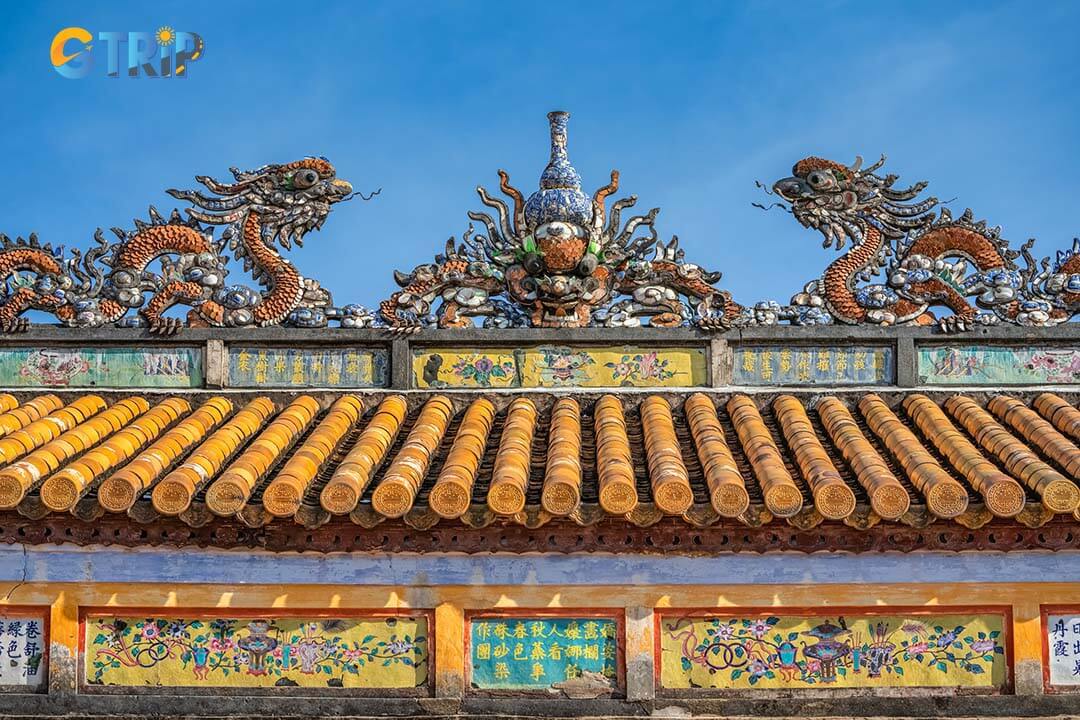
Dragon and cloud motifs throughout the palace symbolize imperial power and divine rule, showcasing exquisite craftsmanship and royal authority
Color scheme and materials
The palace prominently uses red and gold colors, traditional royal colors in Vietnam, enhancing its luxurious and majestic aura. The roof is made of glazed orange-red tiles, and the wooden doors and columns are lacquered, all contributing to the palace’s grandeur. Together, these materials and hues create a visual expression of dignity, prosperity, and spiritual harmony.
Ceremonial functions and historical events
The Thai Hoa Palace symbolises imperial power and is a venue for ceremonial functions of significant historical gravitas. This hall hosted key ceremonies that affirmed Nguyen authority and shaped Vietnam’s history.
Types of ceremonies held in the Thai Hoa Palace
The throne hall served as a venue for various ceremonies crucial to the Nguyen Dynasty's cultural and political governance. Among these were the grand receptions, also known as court audiences, where the emperor met with officials, envoys, and representatives of foreign nations. Such ceremonies often included elaborate rituals that showcased the dynasty's sophistication and the emperor's divine right to rule.
Moreover, the hall was pivotal in hosting annual festivals and events like the Tet Nguyen Dan (Vietnamese New Year). These ceremonies were a time for celebration and for reinforcing the social hierarchy and the emperor’s role as the intermediary between heaven and earth. The meticulous design, including the dragon motifs and the decorated ironwood columns, symbolized authority and was integral to the ceremonial atmosphere.
How the throne hall was used for coronations
Coronations were among the most significant events held at the throne hall, marking the ascension of new emperors. This momentous occasion involved intricate preparation and a series of rites reflecting Confucian philosophies and Buddhist influences that permeated the Nguyen court.
During a coronation, the emperor would ascend the throne, situated on a raised platform, underscoring his supreme status. Wearing the imperial regalia and sitting on the throne amid grand decor affirmed the emperor’s divine right to rule, both personally and publicly. This reinforced the stability of the dynasty and signaled continuity amidst change.
Historical figures and key events at the hall
The throne hall witnessed numerous key historical events and interactions involving notable figures of the Nguyen Dynasty. Emperor Gia Long, who established the dynasty, used the hall to consolidate his power and initiate reforms that shaped the trajectory of modern Vietnam. His successors, including Emperor Minh Mang and Emperor Tu Duc, also used the hall for diplomatic engagements that expanded Vietnam’s influence.
Additionally, the hall holds historical significance associated with the last emperor, Bao Dai. His reign spanned a turbulent era, with the throne hall standing as a constant symbol through the changes. The abdication ceremony of Emperor Bao Dai, marking the end of dynastic rule in 1945, was a poignant, historical moment captured within the walls of Dien Thai Hoa.
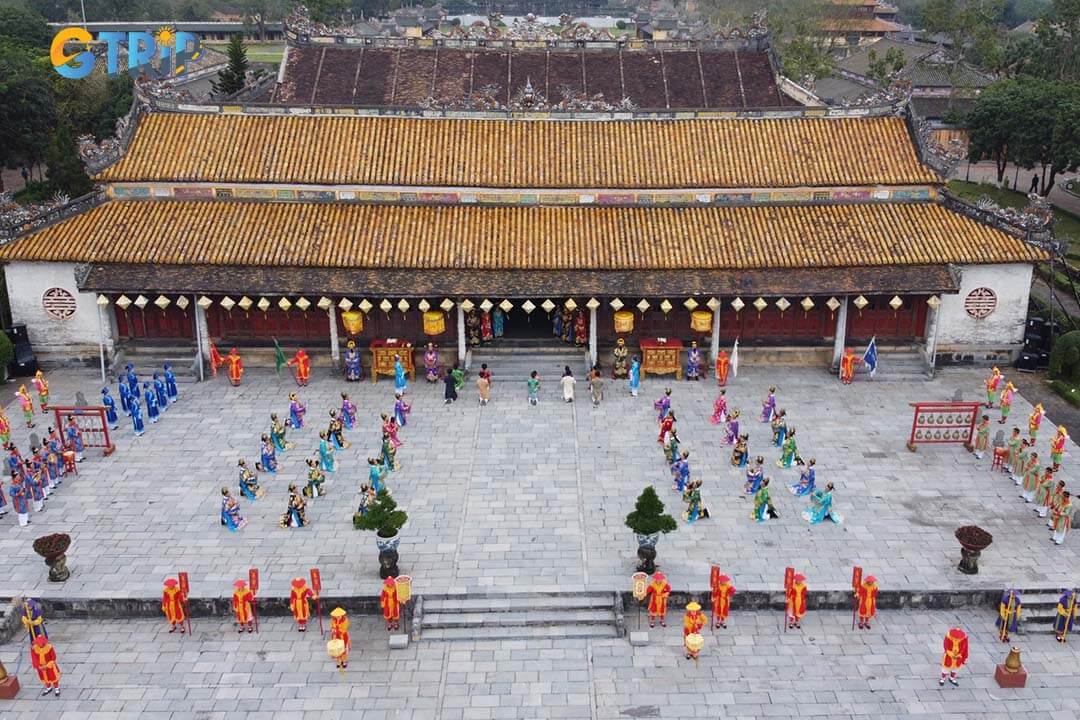
Thai Hoa Palace served as the stage for pivotal events of the Nguyen Dynasty, from Gia Long’s reforms to Emperor Bao Dai’s historic abdication in 1945
The architectural and ceremonial harmony within the throne hall embodies the political, cultural, and spiritual life of the Nguyen era. As a custodian of Vietnamese heritage, its ceremonies and historical events offer a profound understanding of the nation’s imperial past. This integration of history and function highlights the enduring legacy of the Nguyen Dynasty and the throne hall's role in Vietnam's rich cultural tapestry.
Things to see when visiting the Thai Hoa Palace
Visiting Thai Hoa Palace offers a rich experience filled with historical significance, stunning architecture, and cultural depth. As the main ceremonial hall of the Nguyen Dynasty in Hue’s Imperial City, the palace is a visual marvel and a place where you can immerse yourself in Vietnam’s royal heritage. Here are the key things to see and explore inside Thai Hoa Palace that will make your visit memorable:
Architectural grandeur of Thai Hoa Palace
Marvel at the intricate Vietnamese architecture where traditional design seamlessly blends with innovative structural techniques. As you approach Thai Hoa Palace, be captivated by its harmonious fusion of classic Vietnamese aesthetics and ingenious construction. Notice the vibrant dragon carvings, each symbolizing power and prosperity in Nguyen imperial iconography.
You should take time to appreciate how these design elements create a space that is both functional and visually stunning, a true testament to the architectural brilliance of the era. Observe the glazed roof tiles, Hoang Luu Ly (yellow tiles) and Thanh Luu Ly (green tiles), which serve both aesthetic and symbolic purposes. The yellow tiles, traditionally reserved for the emperor, signify his supreme status. The elevated platform offers a panoramic view of the Thai Hoa Palace, representing the emperor’s broad vision and authority.
Majestic ironwood columns
Stand in awe of the 80 robust ironwood columns, each lacquered in striking red and gold. These aren't merely functional but are pivotal in sustaining the structure’s timber frame. These majestic supports, numbering 80 in total, rise as both functional elements and artistic statements, showcasing the grandeur of traditional Vietnamese construction. The meticulous application of red lacquer and gold leaf enhances their visual appeal, creating a lustrous sheen that catches the light and captivates the eye. As you gaze upon these columns, consider the craftsmanship and dedication required to create such enduring works of art.
The emperor’s throne
Observe the raised platform where the throne sits. Intricate dragon motifs emphasize imperial strength and divine right. Envision the emperors who once sat upon this throne, making decisions that shaped the nation. Situated on a raised platform, the throne commands attention and respect, serving as the focal point of the hall. As you observe its elaborate details, take a moment to envision the emperors who once sat here, making decisions that shaped the destiny of Vietnam.
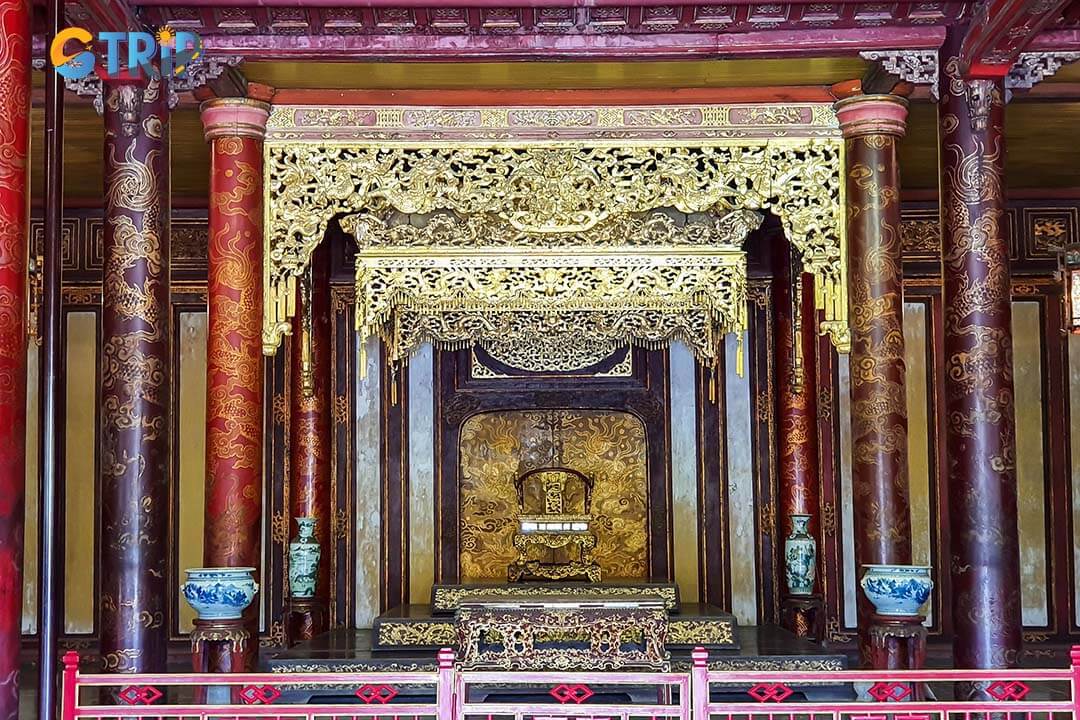
The raised imperial throne, adorned with dragon motifs, commands respect as the hall’s focal point and a symbol of decisions that shaped Vietnam’s history
Enjoy historical exhibits
Engage with exhibits showcasing artifacts such as ceremonial robes, weapons, and insignias. Each object holds a story of its own, illustrating the socio-political and cultural dynamics of Vietnam’s imperial past. Explore the exhibits that showcase a fascinating array of artifacts, each bearing witness to significant moments in Vietnam's rich imperial history. At the Hue Museum of Royal Antiquities, observe artifacts that once belonged to these emperors, ceremonial robes and weapons and insignias, each object holding a story of its own. Take the time to explore the treasures housed within the Hue Museum of Royal Antiquities.
Great Rites Courtyard (Dai Trieu Nghi)
Explore the vast, open courtyard, envisioning the grand ceremonies, including meetings with Nguyen envoys and foreign dignitaries, that once took place here. The expansive courtyard surrounding the Thai Hoa Palace, known as the Great Rites Courtyard, offers a glimpse into the grandeur of imperial court life. Picture the grand ceremonies and formal processions that unfolded in this space, reinforcing the emperor's authority and solidifying the dynasty's cultural identity.
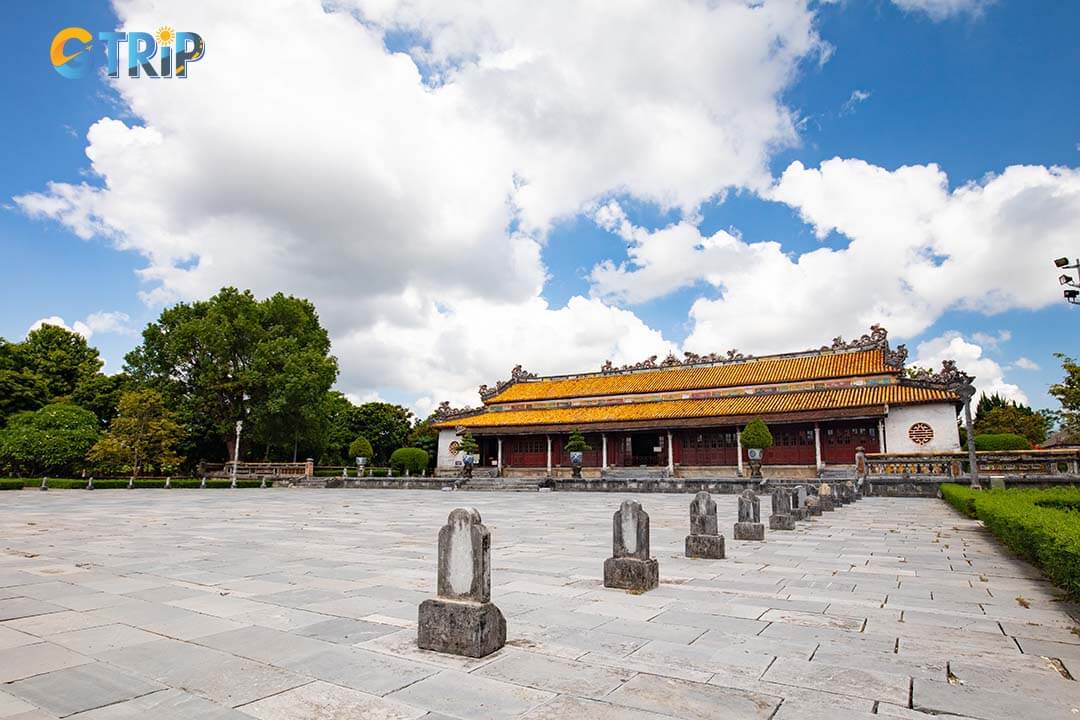
The Great Rites Courtyard offers a glimpse into imperial grandeur, where ceremonies and diplomatic meetings once affirmed the Nguyen Dynasty’s authority
Official entrance fees and ticketing information
The official entrance fee to visit Thai Hoa Palace is included in the ticket for Hue Imperial City, as Thai Hoa Palace is part of this larger complex. The current ticketing information is as follows:
| Visitor type | Ticket price (VND) | Notes |
|---|---|---|
| International adult | 200,000 | Access to entire Imperial City |
| International child | 40,000 | Typically ages 6-12 |
| Domestic adult | 150,000 | Access to entire Imperial City |
| Domestic child | 30,000 | Typically ages 6-12 |
| Children under 7 | Free | Must show ID or proof of age |
Notes
- The entrance fee supports the preservation and maintenance of the historic site.
- Photography is generally allowed, but without flash.
- Visitors are advised to dress modestly out of respect for the cultural significance of the palace.
This ticketing structure is consistent across multiple reputable sources and reflects the most up-to-date information as of early 2025
Opening hours: Thai Hoa Palace is open daily, typically from around 7:00 AM to 5:30 PM (hours may slightly vary by season, e.g., 7:30 AM to 5:00 PM in some months).
Additional ticket options
There are also combination tickets available that cover multiple sites in Hue, such as the Imperial City, royal tombs (Minh Mang tomb, Khai Dinh tomb, Tu Duc tomb), with prices ranging from about 420,000 VND to 580,000 VND, depending on the number of sites and validity duration (2-3 days). However, these are for broader tours beyond just the Thai Hoa Palace.
Opening hours and recommended itineraries
Hue's Imperial City typically welcomes visitors from early morning to late afternoon, with opening hours commonly ranging from 6:30 AM to 5:00 PM. Visiting early is ideal, as the morning light highlights the historical structures, and temperatures are cooler, especially in warmer months.
For a well-rounded exploration, consider the following itinerary:
- Morning: Begin at the Ngo Mon Gate, progressing to the Dai Trieu Nghi courtyard for a sense of the grand ceremonial spaces. This will set the tone for your visit, as these areas are rich with historical significance.
- Midday: Spend time in the Throne Hall itself, appreciating the intricacies of its Vietnamese imperial architecture, such as the ironwood columns and intricate dragon motifs.
- Afternoon: Conclude with a visit to nearby monumental sites like the Nine Dynastic Urns and The Mieu Temple complex, which are integral for understanding the broader imperial narrative.
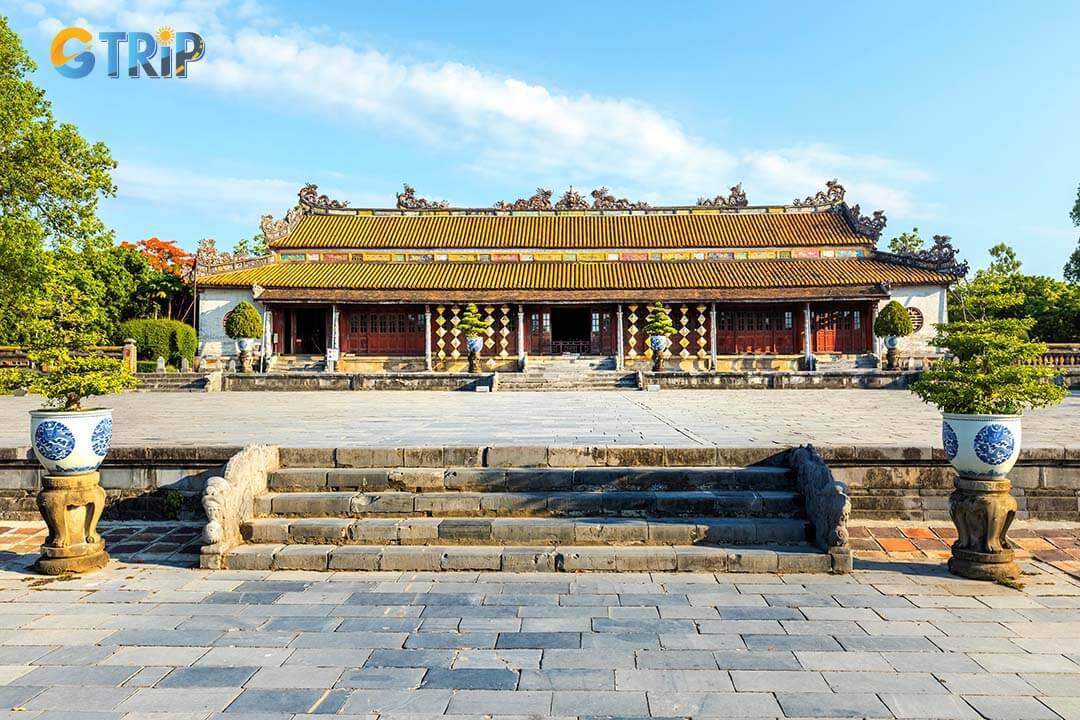
Explore Hue's Imperial City with a visit to key landmarks, from the ceremonial Ngo Mon Gate to the majestic Throne Hall and the historic Nine Dynastic Urns
How to get to Thai Hoa Palace?
The way to Thai Hoa Palace in Hue Imperial City is relatively simple. Hue tour providers often suggest many transportation options to suit different preferences and budgets as below.
By taxi or ride-hailing service
Taxis and ride-hailing apps like Grab are readily available in Hue.
- Cost: The price is variable according to meter.
- Travel time: Usually takes 10 - 20 minutes from the Hue city center
- Hours: 24/7
- Tips: Input "Hue Imperial City" or "Dai Noi" as your destination. Most drivers will drop you off near the main entrance, Ngo Mon Gate, a short walk from the Throne Hall.
By motorbike
Renting a motorbike or scooter offers flexibility.
- Cost: Scooter rentals typically range from 120,000 - 150,000 VND per day.
- Travel time: 10 - 15 minutes from Hue city center.
- Hours: Rental shops typically operate from 8:00 AM to 6:00 PM.
- Tips: Ensure you have a valid license and wear a helmet. Parking is available near the Citadel's entrance
By cyclo
A unique way to soak in the sights and sounds of Hue as you approach the Imperial City.
- Cost: Negotiate the price beforehand, usually around 50,000 - 80,000 VND per hour.
- Travel time: Variable, depending on the starting point.
- Hours: Available during daylight hours.
- Tips: Negotiate the price beforehand
By bicycle
An eco-friendly and healthy way to reach the Imperial City.
- Cost: Bicycle rentals typically range from 30,000 - 50,000 VND per day.
- Travel time: 15 - 25 minutes from the Hue City center
- Hours: Rental shops typically operate from 8:00 AM to 6:00 PM.
- Tips: The ride to the Citadel is relatively flat.
By cruise
A scenic approach along the Perfume River.
- Cost: Boat tours vary widely in price, ranging from 150,000 - 500,000 VND per person, depending on the tour length and inclusions.
- Travel time: Variable, depending on the tour length.
- Hours: Boat tours typically operate during daylight hours.
- Tips: Confirm that the tour includes a stop at the Citadel.
Walking
Feasible if you're staying within the city center.
- Cost: Free.
- Travel time: Variable, depending on your location.
- Hours: Any.
- Tips: Use a map to guide you. Be prepared for a longer walk.
Nearby attractions from Thai Hoa Palace
If you’re visiting Thai Hoa Palace, you’re right in the heart of Hue’s rich cultural and historical landscape. Here are some nearby attractions that perfectly complement your visit, offering a deeper dive into the imperial city’s heritage and local charm:
Hue Imperial City
Just a few steps from Thai Hoa Palace, the Hue Imperial City is the most important historical and cultural center of the Nguyen Dynasty. This vast complex includes palaces, temples, pavilions, gates, moats, and royal living quarters. Exploring the Imperial City allows you to step back in time and experience the daily life and governance of the Nguyen emperors and their officials over several centuries. Notably, the Forbidden Purple City, the private royal residence area, lies within the complex and was off-limits to outsiders. Walking along the ancient walls, exploring gates like Ngo Mon, and learning about the defenses offers insight into the power and smart planning of Vietnam’s feudal era.
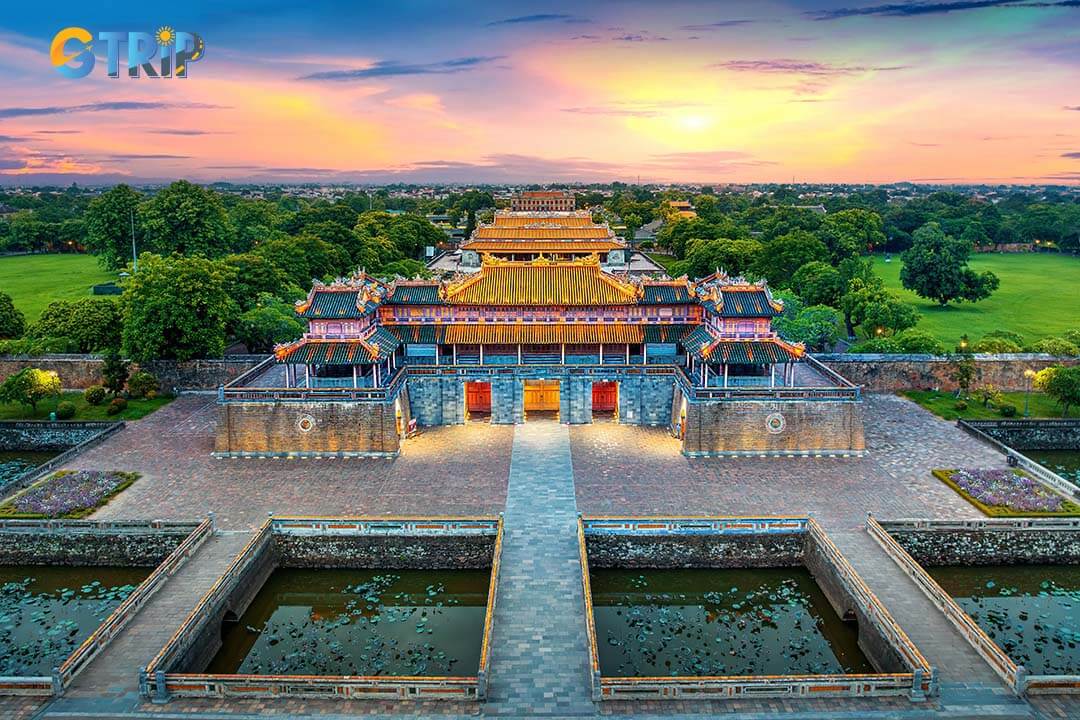
Just steps from Thai Hoa Palace, the Hue Imperial City is a vast historical complex showcasing the grandeur and governance of the Nguyen Dynasty
Ngo Mon Gate (Meridian Gate)
Located directly in front of Thai Hoa Palace, Ngo Mon Gate is the main ceremonial entrance to the Imperial City and a quintessential symbol of the complex’s architecture. The gate has three grand entrances for the emperor, royal family, and mandarins, topped by a richly decorated pavilion with dragon and phoenix motifs. The upper level was historically used by the emperor to observe important ceremonies and receive foreign envoys. Climbing to the top of Ngo Mon Gate offers panoramic views of the Great Courtyard (Dai Trieu Nghi) and the majestic Thai Hoa Palace. It allows visitors to fully appreciate the scale and grandeur of the Nguyen imperial court.
Hue Museum of Royal Antiquities
Hue Museum of Royal Antiquities houses over 9,000 precious artifacts from the Nguyen Dynasty and Champa civilization. The museum’s main building, Long An Palace, was constructed in 1845 during the reign of Emperor Thieu Tri. It features traditional royal architecture with 128 intricately carved wooden pillars depicting the four mythical creatures: dragon, phoenix, turtle, and unicorn. The museum’s extensive collection includes ceramics, cloisonne enamel, royal costumes, musical instruments, imperial seals, cannons, and lacquered wooden objects gilded with gold leaf. Visiting this museum provides a deeper insight into the material culture, rituals, and artistry of the Nguyen royal court, showcasing unique treasures preserved through centuries.
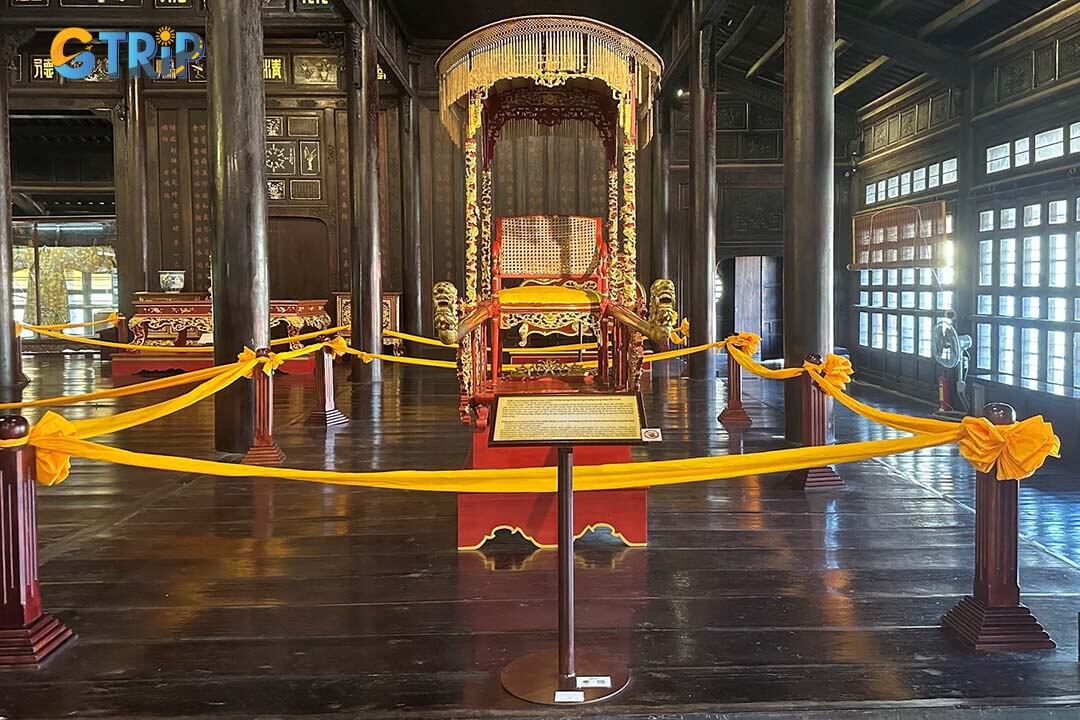
The Hue Museum of Royal Antiquities showcases over 9,000 artifacts from the Nguyen Dynasty and Champa civilization, highlighting royal culture and artistry
Thai Hoa Palace stands as a living narrative that invites everyone to explore, learn, and appreciate the rich tapestry of Vietnam's imperial legacy. Through reflection, exploration, and learning, Hue reveals its essence as a historic and cultural beacon, welcoming all who seek to understand its enduring legacy. Step into history, walk in the footsteps of emperors, and uncover the timeless beauty of Vietnam’s imperial capital. Book your Hue tour with GTrip - Vietnam Travel Agency today and let the stories of Thai Hoa Palace and the Imperial City inspire your journey!

